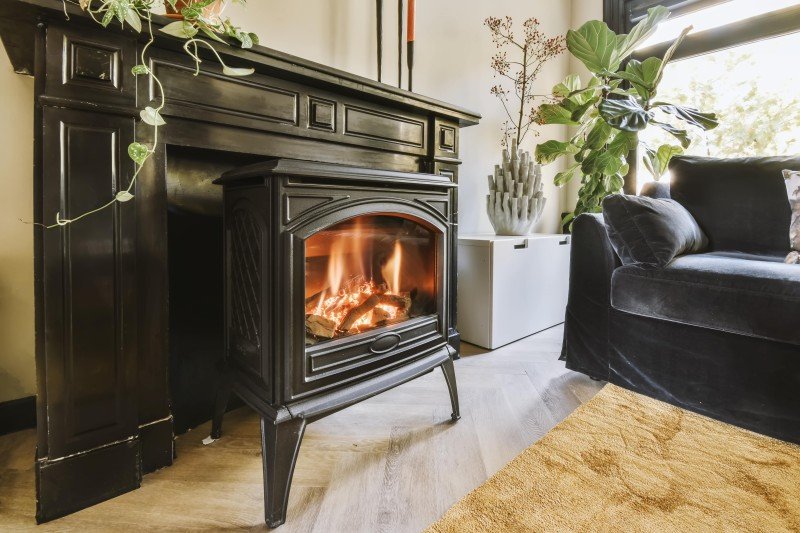7 Things About Outdoor Stoves Online You'll Kick Yourself For Not Knowing
Best Value Fireplaces: An In-Depth Guide
The fireplace has long been considered the heart of a home, providing heat, atmosphere, and a centerpiece for social events. However, browsing through Fireplaces And Stove can be overwhelming, especially with budget constraints in mind. This short article provides an informative guide on the very best value fireplaces, detailing their types, features, and benefits to help homeowners make a sensible option.
Types of Fireplaces
Fireplaces come in a range of designs and types, each with various characteristics, expenses, and advantages. Here's an in-depth take a look at the most common kinds of fireplaces available in the market today.
Type of Fireplace
Description
Average Cost
Pros
Cons
Wood-Burning
Burn logs to create heat and ambiance.
₤ 1,500 – ₤ 5,000
Authentic experience, natural heat
Requires routine maintenance, less efficient
Gas Fireplaces
Uses natural gas or lp to produce heat.
₤ 2,000 – ₤ 5,000
Easy to utilize, cleaner than wood
Limited to gas supply, installation costs
Electric Fireplaces
Replicates flames with LED innovation and produces heat through electricity.
₤ 200 – ₤ 3,000
Easy setup, setup versatility
Less genuine feel, higher operating expenses
Pellet Stoves
Use compressed wood or biomass pellets, offering an eco-friendly choice.
₤ 3,000 – ₤ 4,500
Efficient, low emissions
Needs electrical energy to operate, needs storage for pellets
Ethanol Fireplaces
Burns ethanol fuel, producing flames that do not require a chimney.
₤ 300 – ₤ 2,500
No vents needed, portable
Greater fuel expense, safety concerns
Aspects to Consider When Choosing a Fireplace
Choosing the right fireplace is not almost visual appeals; it also involves useful factors to consider. Here are essential aspects to remember:
1. Budget
- Figure out just how much you are prepared to invest. Keep in mind that installation and upkeep costs can include up.
2. Space and Size
- Guarantee the fireplace fits well within the space, thinking about both the area readily available and the heating requirements.
3. Fuel Type
- Choose the fuel source based upon accessibility, expense, and the kind of atmosphere you want to achieve.
4. Efficiency
- Select units with high-efficiency scores to guarantee you are getting the most value for your cash in regards to heat output.
5. Aesthetic Appeal
- Pick a style and style that complements existing decoration and improves the total charm of the area.
6. Laws
- Understand regional regulations, allows, and building regulations that may affect your fireplace setup.
Top Best Value Fireplaces
Based on consumer evaluations, professional viewpoints, and total value for money, here are a few of the very best value fireplaces presently available in the market:
1. DuraVent Pellet Stove
- Type: Pellet
- Typical Cost: ₤ 2,000
- Emphasizes: Highly efficient with low emissions, making it an exceptional option for environmentally-conscious house owners.
2. Napoleon B36NTR-1
- Type: Gas
- Typical Cost: ₤ 2,500
- Emphasizes: This fireplace is aesthetically enticing and highly efficient, with a smooth style and adjustable flame.
3. Duraflame Electric Heater Stove
- Type: Electric
- Typical Cost: ₤ 200
- Emphasizes: Affordable and portable, ideal for smaller sized spaces or including atmosphere to a space without long-term installation.
4. Genuine Flame Juliet Gel Fireplace
- Type: Ethanol
- Average Cost: ₤ 300
- Highlights: An elegant choice for modern areas that requires no venting, making it versatile and easy to set up.
5. Vogelzang VG5790
- Type: Wood-Burning
- Typical Cost: ₤ 800
- Emphasizes: Offers a traditional wood-burning experience with a smooth modern design, ideal for those who value the classic ambiance.
Frequently Asked Questions (FAQs)
Q1: What is the most economical fireplace option?
A1: Electric fireplaces tend to be the most affordable in terms of preliminary purchase price and installation, however can have greater operating expenses compared to gas or pellet units.
Q2: Are gas fireplaces safer than wood-burning fireplaces?
A2: Yes, gas fireplaces typically produce fewer emissions and pose a lower threat of chimney fires as they do not produce creosote like wood-burning units.
Q3: Can I install a fireplace myself?
A3: While some electric fireplaces permit easy self-installation, other types, especially gas and wood-burning models, normally need professional installation due to venting and security concerns.
Q4: How do I maintain my fireplace?
A4: Regular maintenance includes cleaning up the chimney (for wood-burning fireplaces), looking for gas leakages (in gas systems), and ensuring appropriate ventilation for electric models.
Q5: Is an ethanol fireplace an excellent option?
A5: Ethanol fireplaces are appealing for their modern design and ease of installation. Nevertheless, they can be less efficient and more expensive to operate long-term compared to other fuel types.
Selecting a value fireplace that satisfies your aesthetic preferences and useful needs involves thorough research and factor to consider. By comprehending different types of fireplaces, their associated costs, and benefits, house owners can make educated choices that will not only fit their budget plan however also improve the warm and welcoming environment of their homes. Whether going with an electric, gas, wood-burning, pellet, or ethanol design, the ideal fireplace awaits to change your home.
